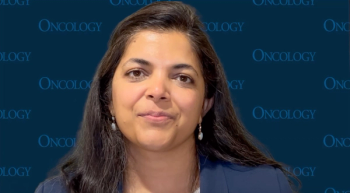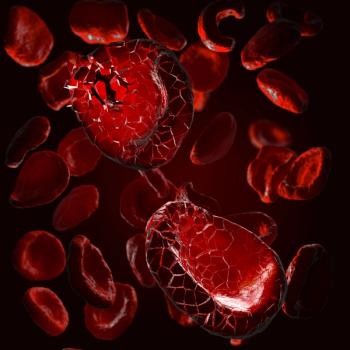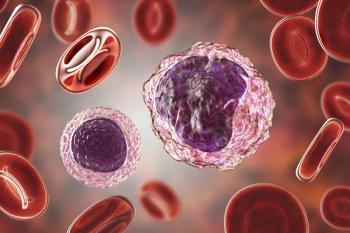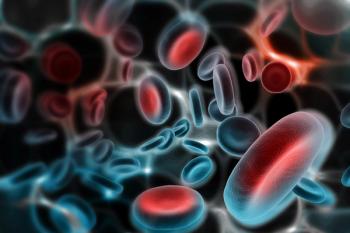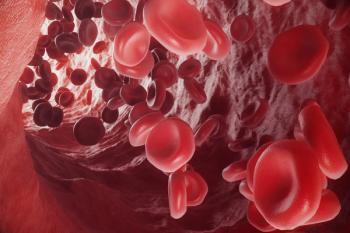
Oncology NEWS International
- Oncology NEWS International Vol 13 No 9
- Volume 13
- Issue 9
Rituximab Improves Outcomes in Young Pts With Diffuse Large B-Cell NHL
NEW ORLEANS-For 25 years, oncologists made no progress in treating diffuse large B-cell non-Hodgkin’s lymphoma (DLBCL). Then, in 2000, the anti-CD20 antibody rituximab (Rituxan, MabThera in Europe) was shown to improve results in
NEW ORLEANS-For 25 years, oncologists made no progress in treating diffuse large B-cell non-Hodgkin’s lymphoma (DLBCL). Then, in 2000, the anti-CD20 antibody rituximab (Rituxan, MabThera in Europe) was shown to improve results in patients 61 to 80 years old. Now, similar results have been found in low-risk younger patients, Michael G.M. Pfreundschuh, MD, PhD, reported at the 40th Annual Meeting of the American Society of Clinical Oncology (abstract 6500). Dr. Pfreundschuh is director of medical oncology, Saarland University Medical School, Hamburg, Germany.
The phase III multinational randomized MInT study (MabThera International Trial) enrolled 824 previously untreated patients between 18 and 60 years old with confirmed CD20-positive DLBCL. Disease was Ann Arbor stage I with bulky disease or stage II, III, or IV. This interim report analyzed results for 326 patients. All 326 patients were assigned to receive six cycles of a CHOP-like chemotherapy regimen:
â CHOP-21 (cyclophosphamide, doxorubicin, vincristine, and either prednisone or prednisolone)
â CHOEP-21 (CHOP plus etoposide)
â MACOP-B (methotrexate, doxorubicin, cyclophosphamide, vincristine, prednisone, bleomycin, trimethoprim/sulfamethoxazole, and ketoconazole)
â PMitCEBO (prednisolone, mitox-antrone, cyclophosphamide, etoposide, bleomycin, and vincristine)
Patients with bulky disease also received 30 to 40 Gy of radiotherapy. In addition, the 161 patients in the treatment group received an intravenous infusion of rituximab at a dose of 375 mg/m2 on days 1, 22, 43, 64, 85, and 106.
The primary endpoint was time to treatment failure. Treatment failure was defined as progression, failure to achieve complete remission, relapse, or death.
Time to Treatment Failure
Time to treatment failure differed significantly between the control and treatment groups, Dr. Pfreundschuh reported. After 24 months, 81% of patients on chemotherapy plus rituximab had not yet experienced treatment failure, compared with 58% on chemotherapy alone, a result significant at P < .000005. Two-year overall survival was 95% in the treatment group vs 85% in the chemotherapy-only group (P = .002).
Remission rates also favored the rituximab therapy group: 85% of the treatment group had a complete remission and 7% had a partial remission, compared with 65% and 12%, respectively, in the chemotherapy-only group.
The researchers found that adherence in the rituximab group was excellent. There appeared to be no additional toxicity; adverse effects occurred in 53% of the rituximab group and 57% of the chemotherapy-alone group.
Because of the extremely favorable results for rituximab, the MInT study was stopped after this interim analysis. In his presentation, Dr. Pfreundschuh concluded that adding rituximab treatment to six cycles of a CHOP-like chemotherapy regimen in young people with CD20-positive DLBCL significantly improves time to treatment failure, complete remission rates, and overall survival while decreasing progression rates (5% vs 16% for chemotherapy alone).
In a press conference, Dr. Pfreundschuh said that 90% of lymphomas are positive for the CD20 antigen. Thus, many DLBCL patients may be able to benefit from the addition of rituximab to their regimen.
Articles in this issue
Newsletter
Stay up to date on recent advances in the multidisciplinary approach to cancer.


